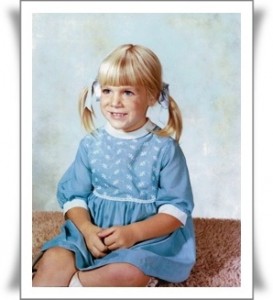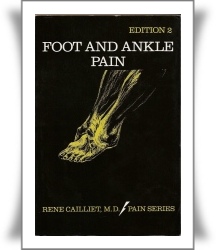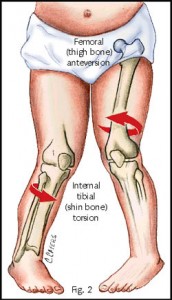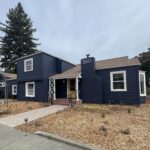 — Different synchronistic events and life circumstances can sometimes conspire to show you your life’s path.
— Different synchronistic events and life circumstances can sometimes conspire to show you your life’s path.
In my case, those events and conditions combined with my anatomical structure to show me mine, eventually leading me to my current profession as a Certified Advanced Rolfer™.
Are you familiar with Rolfing® Structural Integration? Rolfing SI is a form of somatic education. Its main purpose is to improve the structure and alignment of the body. It is not a type of massage therapy. Rather, Rolfing practitioners are the structural experts of the human body.
We use skillful hands-on techniques as well as movement education to empower clients to take charge of their own physical and emotional health. Rolfing SI also has the potential to support personal evolution through enhancing the vertical alignment of the body, facilitating the upward movement of energy through our systems and the subsequent evolution of consciousness.
One of the most frequently asked questions I receive from new clients and friends is, “How did you get into Rolfing SI?”
Being born in San Francisco at the height of the Summer of Love maybe it was inevitable I should become involved with a body of work that came into public consciousness during the Human Potential Movement of the 1960s. My Vedic astrologer, who happens to live in San Francisco, certainly believes it is clearly evident in the alignment of the planets at the time of my birth.
Leg issues I did not “grow out of”
As I look back on my life I see it all began around the age of four. I was very “pigeon-toed” as a child. I remember going to see my pediatrician with my mother and her asking him at the end of my physical, “What about Carole’s legs?” Early on, the answer was, “She’ll grow out of it,” and “Do these stretches and that should help.”
I remember running down the hill one day and falling down again. (I fell down a lot as a child, frequently enduring bruises and abrasions on my elbows and knees.) As I was picking myself up off the ground I became curious about my predicament and determined to figure out what I had tripped over. Looking around on the ground I could find nothing. And then, slowly creeping into my consciousness, came the awareness I had tripped over my own feet!
That was a monumental moment for me.
My introduction to twister cables
I was eventually referred to a “specialist” and fitted with twister cables, braces that fastened around my waist, thighs and calves with attached shoes. I was to wear them 24 hours a day, which I ultimately detested. The daytime wasn’t so bad, but nighttime was horrible.
The shoes, being connected to the braces, didn’t allow me to relax my legs at night. I have memories of the sheets getting twisted around the braces leaving me feeling trapped in bed with the frequent result being torn sheets.
My father, who is quite the home filmmaker, filmed this footage of me in my braces in 1971.
It’s taken most of my life to understand the structural issues that are going on in my body. I can’t remember ever speaking with a professional who explained to me what was happening in the bones and joints of my legs. It’s not such a simple thing having a toe-in gait pattern.
Beginning to understand my body
The first source I discovered that explained the pattern in more detail was an excellent little book by Rene Cailliet, MD, title d Foot and Ankle Pain. In 2002, while browsing through the bookshelf of a colleague, I spotted the book and inside I found a wonderful little drawing labeled “orthotic twisters.”
d Foot and Ankle Pain. In 2002, while browsing through the bookshelf of a colleague, I spotted the book and inside I found a wonderful little drawing labeled “orthotic twisters.”
It was the first drawing I’d ever seen of my braces. It explained that twister cables were coiled springs within a cable housing that resists torque. Through adjustment of these springs the foot can be made to turn in or out and thus hopefully control and retrain the movements of the legs.
I went on to read that intoeing can result from excessive internal rotation of the femur and/or from marked internal tibial torsion. Cailliet also stated that techniques for measuring femoral torsion presented “radiologic difficulties” and had not yet been standardized. Apparently there wouldn’t be any medical testing to answer my questions.
I’d need to figure this out on my own.
Discovered: an internal tibial torsion
I sat down on the floor with my legs straight out in front of me and began to look. I noticed that when I pointed my toes straight up to the sky my right knee also pointed straight up, but my left knee pointed towards the left. I was also aware of a lot of muscular effort happening around my left hip joint.
 What was going on? I started to allow my left foot to rotate in. I rotated it in until the strain in my hip muscles relaxed and my kneecap pointed straight to the sky. Now my left foot was pointing towards my right. Aha, I thought, so I have an internal tibial torsion!
What was going on? I started to allow my left foot to rotate in. I rotated it in until the strain in my hip muscles relaxed and my kneecap pointed straight to the sky. Now my left foot was pointing towards my right. Aha, I thought, so I have an internal tibial torsion!
I then started to explore the range of motion in my hips. My right leg had much more external rotation than my left; my left leg had much more internal rotation than my right. As far as I’ve been able to figure out I most likely have a femoral torsion on my left leg in addition to the tibial torsion.
I also suspect there is some modeling of my actual hip joint and the associated ligaments that is congenital and some that was patterned into my body while I was growing and walking in the toe-in pattern. I believe it shaped the structure of my hip joint much like a tree can be shaped by the wind constantly blowing against it from one direction.
I found some additional resources on the internet about femoral and tibial torsion that have been very helpful to me in my explorations. It is my hope that through writing about my own experience I can help others to better understand their own structural challenges.
Being put into twister cable braces at the age of four to correct “pigeon-toed” walking was the spark that ignited the fire of Carole LaRochelle’s life-long interest in the structural organization of the human body.
In private practice as a Certified Rolfer™ since 1996 Carole has also studied pilates, craniosacral therapy and somatic approaches to healing trauma. She has a deep and abiding interest in body-oriented psychotherapies. Carole sees clients in Santa Rosa, San Francisco and Berkeley, California. For more information please visit her website.


